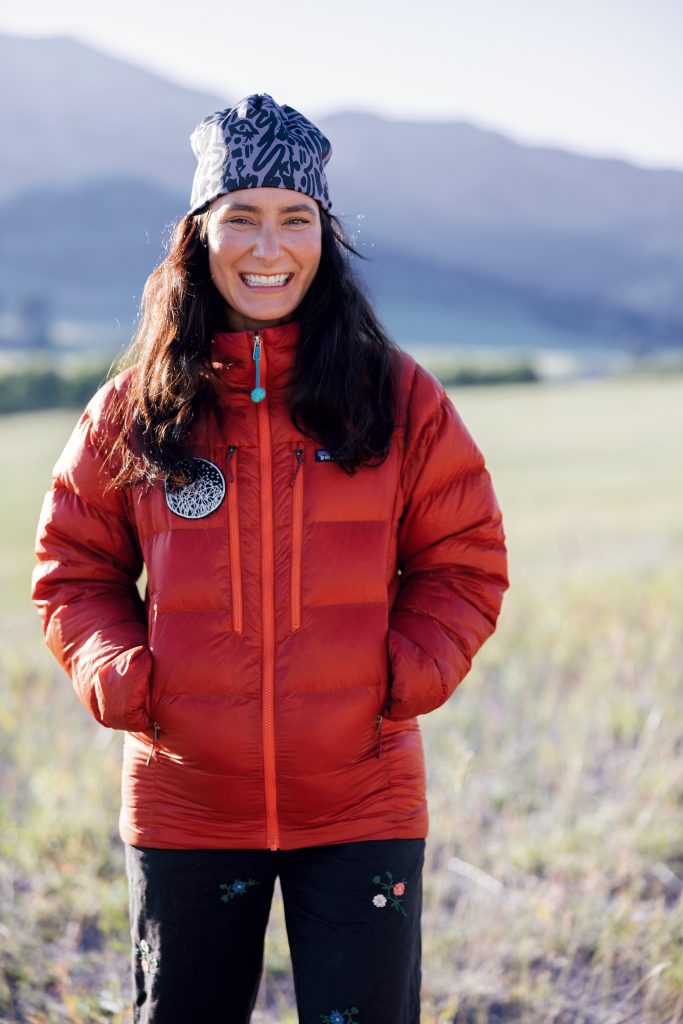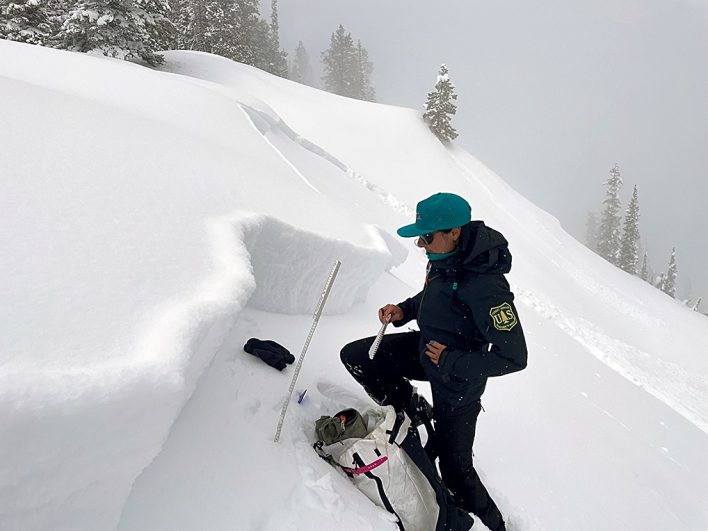Gabrielle Antonioli started down a straightforward path: Go to medical school and become a doctor. Somewhere along the way she took a sharp left turn and found herself in the world of avalanche forecasting and snow science—a twisting, forking route that has involved a master’s in snow science, American Mountain Guide Association courses, a stint at the Gallatin National Forest Avalanche Center and a satellite snow mapping project with NASA. Last season, she started forecasting for the Bridger-Teton National Forest Avalanche Center in Jackson, Wyoming, and, while the future isn’t entirely clear, Antonioli predicts it will be bright. —Betsy Manero

Gabrielle Antonioli thought she wanted to be a doctor. Somewhere along the way med school turned into a master’s in snow science. Andy Austin
As told by Gabrielle Antonioli
I grew up skiing in Montana at a little place called Discovery. I moved to Bozeman for college and got into backcountry skiing there. That was a natural catalyst. Bozeman has a high concentration of snow and avalanche professionals, and I received a lot of mentorship, which was the most pivotal point in determining my career path.
Organismal biology was my undergrad. So, I’m going to med school and working at a hospital for four years. With my work schedule, I could ski constantly and watch the snowpack develop over the winter. Things naturally fell into place with mentorship at the sametime. It just seemed to feel right to pursue a snow science career.
Avalanche forecasting was just so much more fulfilling. It’s this very young science and industry in the U.S. I felt like there was a lot of room for change versus medicine, which is an established industry already.
Studying snow is as interesting as studying a living thing. It’s changing fundamentally every single day. If you tap into that curiosity, that this thing—even if it looks the same day to day—is constantly changing, and you start picking up on nuances, I think it becomes a lot more interesting and fulfilling.
I know a handful of women my age who are trying to develop careers in the snow science field. We are few and far between, but that is changing. I like seeing them doing well at different avalanche centers or ski patrols. But it’s been a little disappointing, the lack of female mentorship. I do have a primary female mentor, which I feel really lucky to have.
Pushing for people who have snow professional jobs to have more structure and a network has been an important part of my career, too. The trend is changing to have more women. The job is getting a lot more secure. I think those things go hand in hand because it can be a sustainable career versus all these people burning out after a few years.
Forecasting, guiding and ski patrolling are becoming more respected careers, which has been a long time coming in the industry. We develop these highly specialized skills that take a lot of time, education and money. It’s sad to watch friends develop these careers and then not be very well compensated or not taken seriously in the industry.

On this day in the Snake River Range, Antonioli and Aaron Diamond remotely triggered about 12 avalanches from a flat ridge. After one slide, Antonioli gets to work profiling the crown. Aaron Diamond
The hardest part is it takes so much time—half a decade at least for me—to feel comfortable starting to forecast or have a gauge of snow and how it works at some fundamental level. Yes, it’s fun to be on skis, but it changes once it becomes work. You have to change your mindset once you’re modeling behavior and responsible for others, whether it’s guiding or educating groups or forecasting. We’re essentially putting labels on all these things that are part of nature, trying to quantify them and then explaining them in a really simple way.
A good avalanche center is an information hub for everyone. It’s really important to report avalanches. There’s this idea that there’s shame associated with triggering an avalanche or being in one. But, if you take this career path or you just backcountry ski a lot, you will be in an avalanche, you’re going trigger an avalanche. Even just submitting an anonymous observation, you can help someone not choose that same aspect or area the next day and having that happen to them. Crowdsourcing snowpack knowledge can be a powerful tool.
I’ve been in avalanches. I feel fine talking about them now that I’ve had time to process. Everyone’s hush hush about it. I’m not going to judge them. Avalanche centers support you in processing. I wish that there was less shame because it doesn’t help the person process.
This is a community product. It will help you and it helps other people, but you have to buy in. I’ve seen really good avalanche centers have a really thriving ski community. That feels healthy.
This article was originally published in Issue No. 154, The Blue Collar Issue. To read more, pick up a copy, or subscribe to read stories like these as soon as they are published in print.










Related posts: